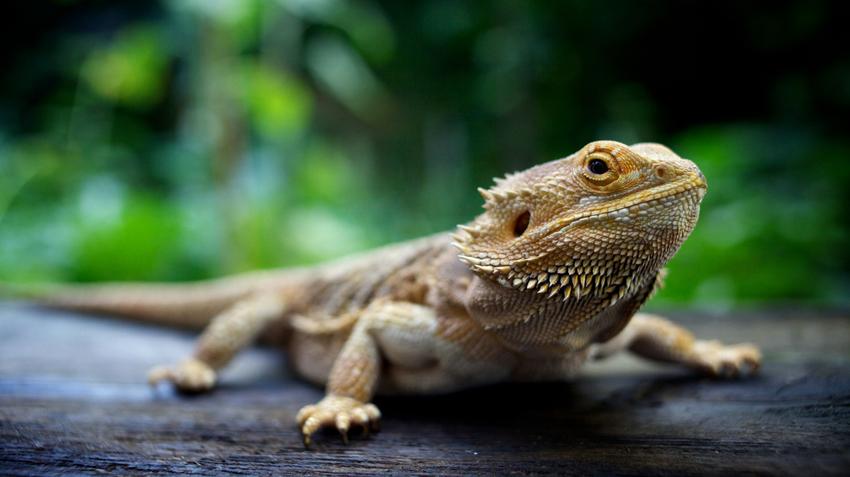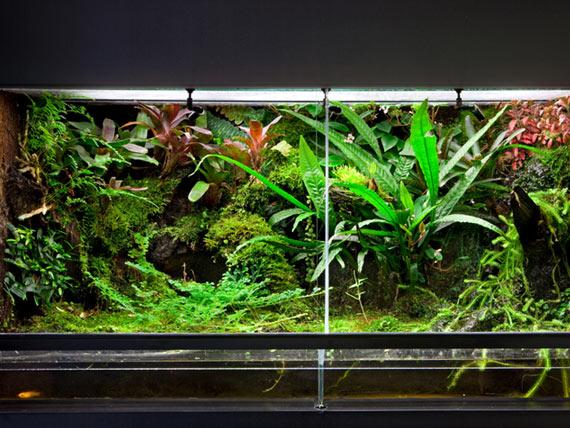
Essential Guide to Caring for Your Reptiles and Amphibians
Essential Guide to Caring for Yoru Reptiles adn Amphibians
as the sun dips below the horizon and the world transitions into twilight,a hidden realm of captivating creatures awakens—reptiles and amphibians. These cold-blooded companions, ranging from the vibrant chameleon to the elusive tree frog, embody a diverse array of colors, sizes, and personalities. Whether you’re a seasoned herpetologist or a curious newcomer eager to explore the joys of reptilian and amphibian ownership, understanding their unique needs is essential for fostering a thriving habitat.
In this essential guide, we delve into the multifaceted world of caring for these remarkable creatures. From setting up the perfect habitat to ensuring proper nutrition and health, we will equip you with the knowledge and tools to create a harmonious home for your scaly and smooth companions. Join us on this journey into the intricacies of herpetile care, where every detail matters and the rewards are as vibrant as the creatures themselves.
Table of Contents
- Understanding Habitat Requirements for Reptiles and Amphibians
- Nutrition Essentials: Feeding and Diet Considerations
- Health Monitoring and Common Illnesses
- creating a Safe and Enriching Environment
- In Conclusion

Understanding Habitat Requirements for Reptiles and Amphibians
Understanding the habitat requirements for reptiles and amphibians is crucial for their health and well-being. These fascinating creatures thrive in diverse environments, each with specific needs that mimic their natural habitats. To effectively care for them, it’s critically important to recognize the key environmental factors that contribute to their overall happiness and longevity, including:
- Temperature: Most reptiles and amphibians are ectothermic, meaning they rely on external heat sources to regulate their body temperature.
- Humidity: Proper moisture levels are essential, notably for amphibians, which may require a humid microenvironment to support their skin health.
- Space: Sufficient space is necessary for these creatures to exhibit natural behaviors,including climbing,burrowing,and swimming.
- Cover and Enrichment: Hiding spots created from plants, rocks, or logs help reduce stress and fulfill their instinctive need for security.
To create a suitable habitat, it is beneficial to consider the following examples of suitable environments for various reptiles and amphibians:
| Species | Ideal Habitat |
|---|---|
| Bearded Dragon | Arid deserts, requiring flat surfaces and basking areas |
| Green Tree Frog | Moist forest environments with plenty of vegetation |
| Ball Python | Dry grasslands with natural hiding spots like rocks and logs |
| Red-Eared Slider | Ponds or lakes, with basking areas and underwater plants |

Nutrition Essentials: Feeding and Diet Considerations
When it comes to feeding reptiles and amphibians, understanding their dietary requirements is paramount for maintaining their health. each species comes with its own unique needs, ranging from herbivorous to carnivorous diets. Therefore, it is essential to provide a well-balanced diet that mimics their natural feeding habits. Here are some key components to consider:
- Variety is Key: Introduce a diverse range of foods including insects,vegetables,fruits,and specially formulated pellets to ensure nutritional balance.
- Calcium and Vitamin Supplements: Regularly dust live foods with calcium and vitamin supplements to prevent deficiencies that could lead to health issues.
- Feeding Frequency: adjust feeding schedules based on species, age, and growth stage. Juveniles typically require more frequent feedings than adults.
Moreover, hydration is another critical factor often overlooked in reptile and amphibian care. Create a proper water source suitable for the specific needs of your pet. Some species may require a water bowl, while others may thrive in a more humid environment. The following table highlights common hydration methods:
| Species | Preferred Hydration Method |
|---|---|
| Leopard Gecko | Shallow Water Dish |
| Green Tree Frog | Humidity in Enclosure |
| Bearded Dragon | Water Bowl and Occasional Mist |
| Bull Snake | Water Bowl |

Health Monitoring and Common Illnesses
Regular health monitoring is crucial for the wellbeing of reptiles and amphibians. Observing the behavior, appetite, and physical condition of your pet can help identify potential health issues before they escalate.Common signs of illness include changes in skin color, lethargy, and abnormal excretion patterns. A watchful eye can make a significant difference. Maintaining proper habitat conditions—like temperature and humidity—is equally essential, as environmental stress can lead to illnesses that may be tough to treat.Ensure that your pets have access to clean water and appropriate substrates to promote their health.
Common ailments affecting reptiles and amphibians vary by species, but some issues are universally recognizable. Among them are:
- Respiratory Infections: Symptoms include wheezing or open-mouth breathing.
- Skin Issues: Look for shedding problems or lesions, frequently enough indicating dehydration or infection.
- Parasites: These can manifest through weight loss and lethargy, requiring veterinary intervention.
For swift reference, the following table summarizes these common illnesses alongside their primary symptoms and recommended actions:
| Illness | symptoms | Recommended Action |
|---|---|---|
| Respiratory Infection | Wheezing, open-mouth breathing | Consult a veterinarian |
| Skin Issues | Shedding problems, lesions | Improve humidity; seek vet advice |
| Parasites | Weight loss, lethargy | Antiparasitic treatment |

Creating a Safe and Enriching Environment
Providing a secure and stimulating atmosphere for your reptiles and amphibians is crucial for their well-being and longevity. Enclosure design plays a significant role in creating this environment, and elements such as temperature gradients, humidity levels, and appropriate lighting are essential. Start by ensuring your enclosure is spacious enough to allow natural behaviors, and include various substrates, hiding spots, and climbing structures to mimic their natural habitats. Here are some key components to consider:
- Temperature and Humidity: Maintain specific temperature ranges with the help of heat mats or lamps, and monitor humidity with digital hygrometers.
- Lighting: Use UVB lights during the day to help with calcium absorption and overall health.
- Natural Decor: Incorporate live plants, rocks, and logs to create a more engaging environment.
- Water Sources: Provide a shallow dish for hydration and, if applicable, a small water feature for amphibians.
To further enhance the habitat, regular maintenance and cleaning are crucial. A dirty environment can lead to health risks like infections or respiratory problems. schedule weekly checks to unclog any waste and ensure water quality remains pristine. For deeper cleaning,a bi-weekly or monthly thorough scrub should be performed using reptile-safe cleaning products. Here’s a simple maintenance schedule to follow:
| Task | Frequency |
|---|---|
| Check Temperature & Humidity | Weekly |
| Clean Water Dish | Daily |
| Remove Uneaten Food | Daily |
| Deep Clean Enclosure | Monthly |
In Conclusion
As you embark on your journey as a reptile or amphibian caretaker, remember that knowledge is your most powerful tool. By understanding their unique needs and preferences, you open the door to a rewarding relationship with these fascinating creatures. From creating the perfect habitat to recognizing the signs of stress or illness, each step you take enhances their quality of life and enriches your own.
Whether you’re a seasoned herpetologist or a curious beginner, the key to success lies in your commitment to continuous learning and observation. As you bond with these remarkable animals, each interaction will unveil new layers of their intriguing behaviors and needs. by fostering a nurturing environment, you not only ensure their well-being but also contribute to the preservation of their species.In closing, may your home be a haven of safety and enrichment for your scaly and slimy friends. Their trust in you is a testament to the care you provide and the understanding you cultivate. Dive deeper into your exploration of reptilian and amphibian lifestyles, and let your passion guide you toward a fulfilling experience as their caretaker. Happy herping!





